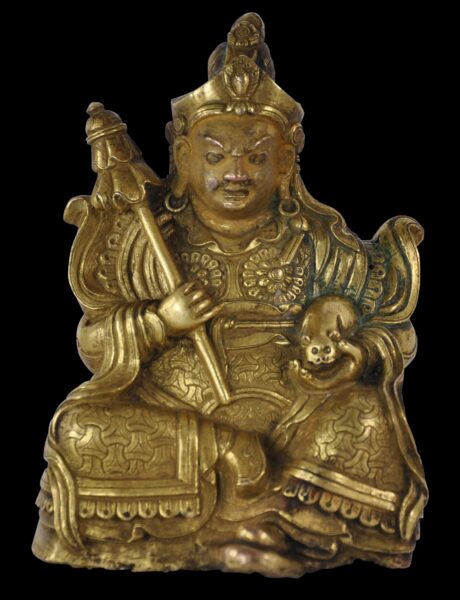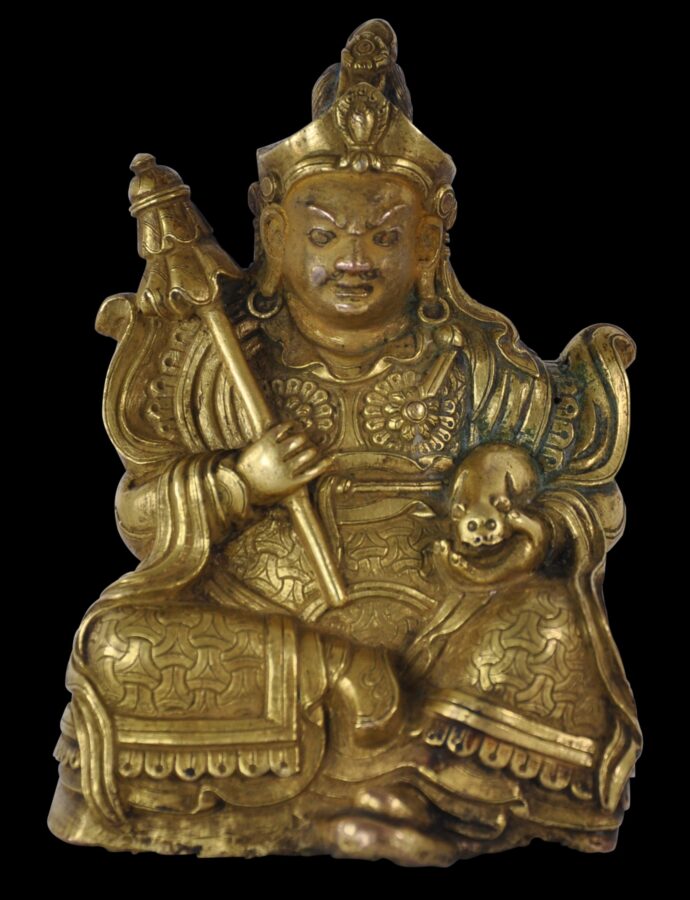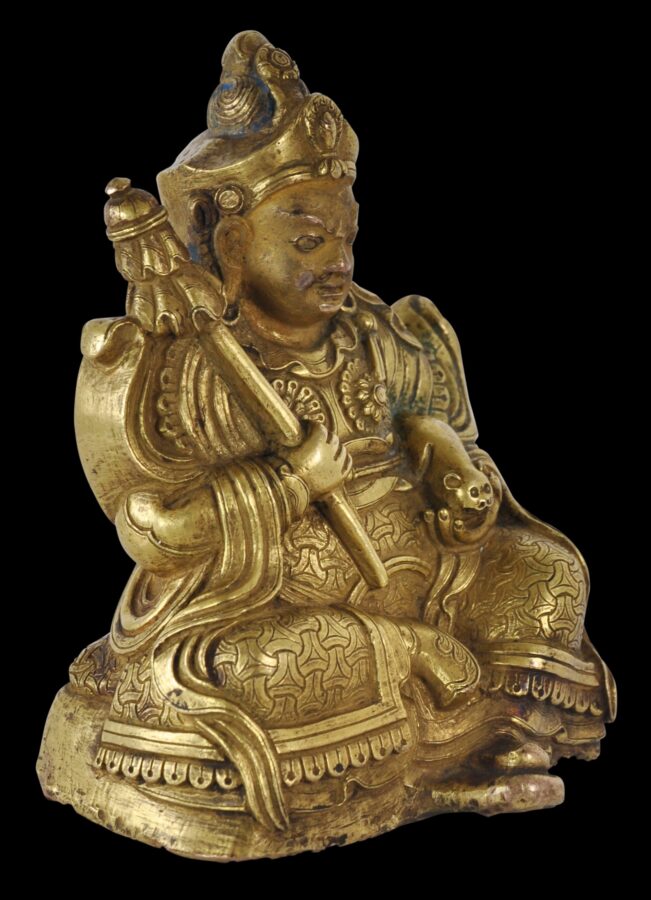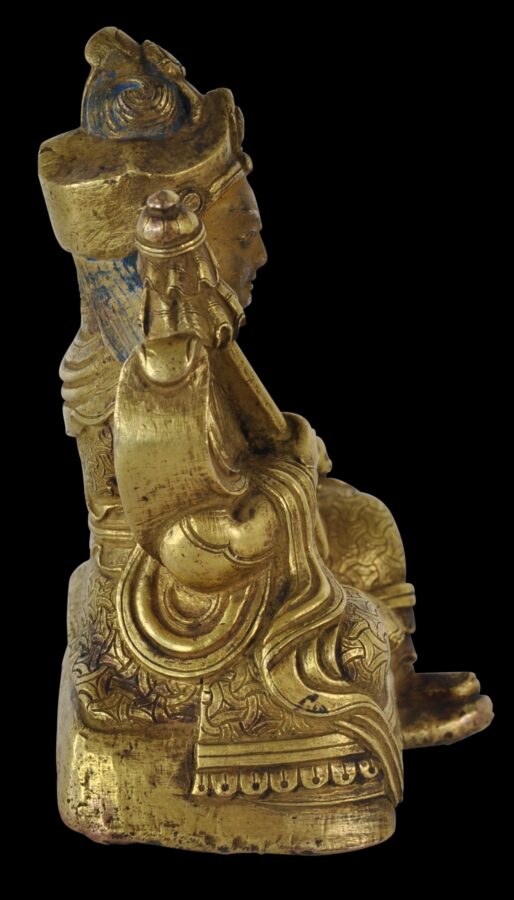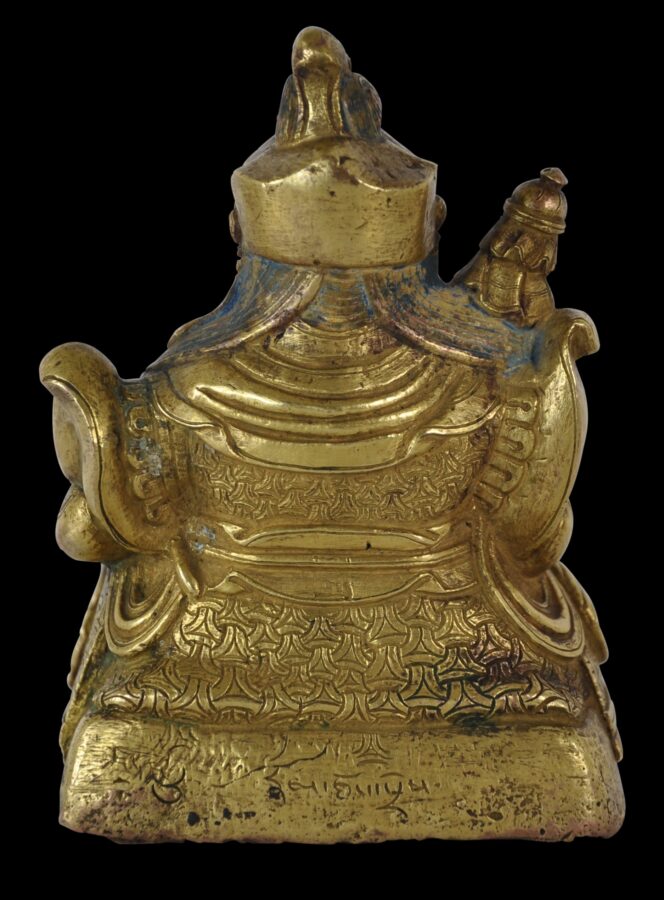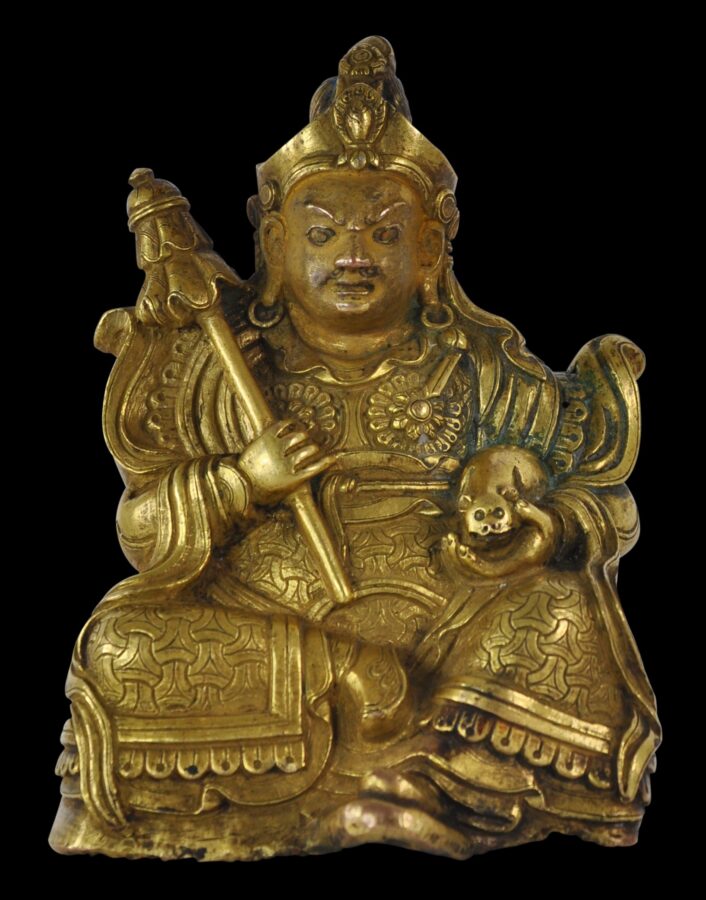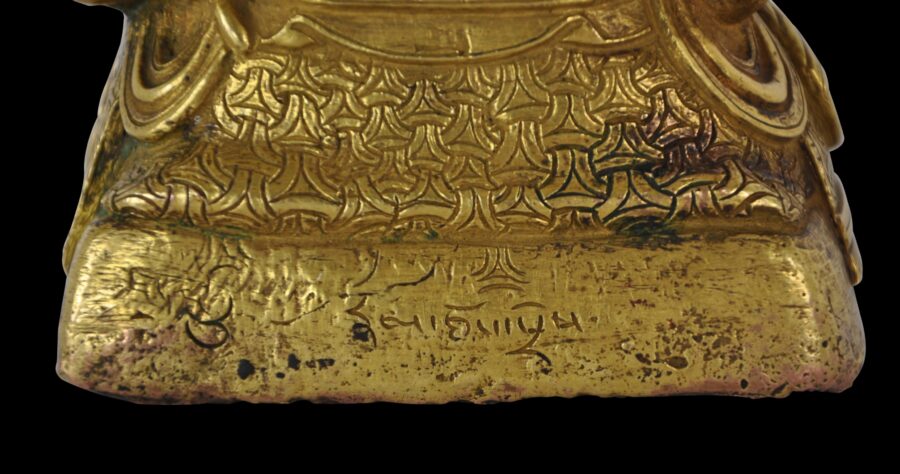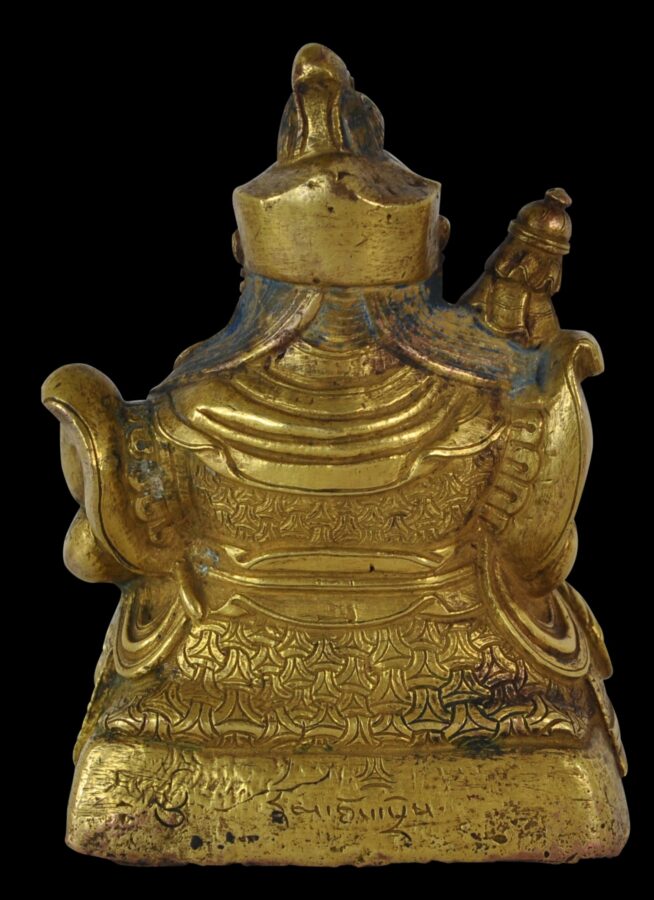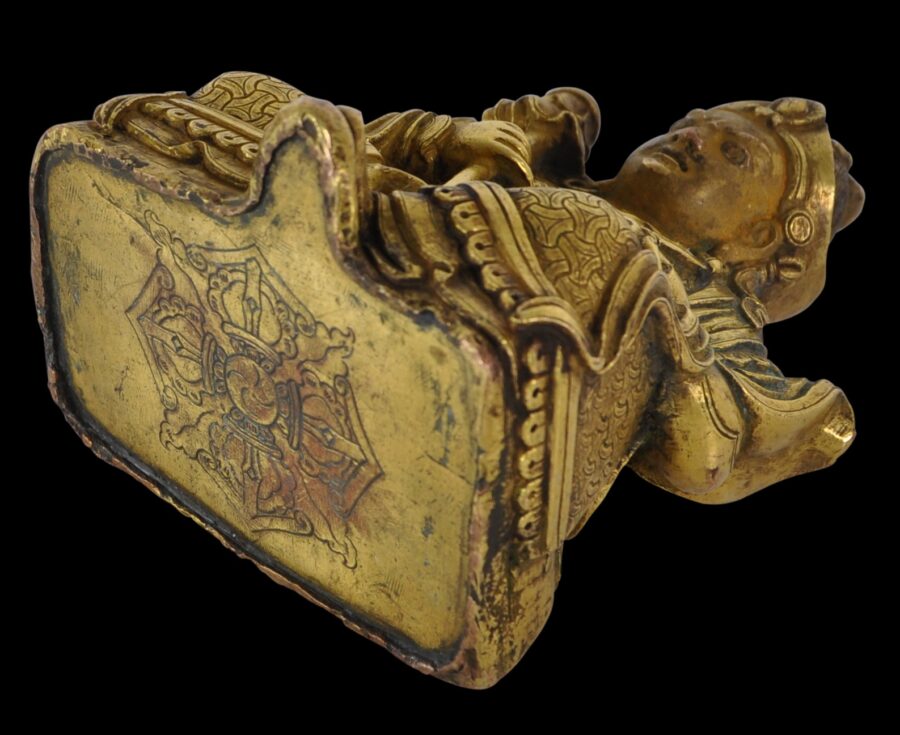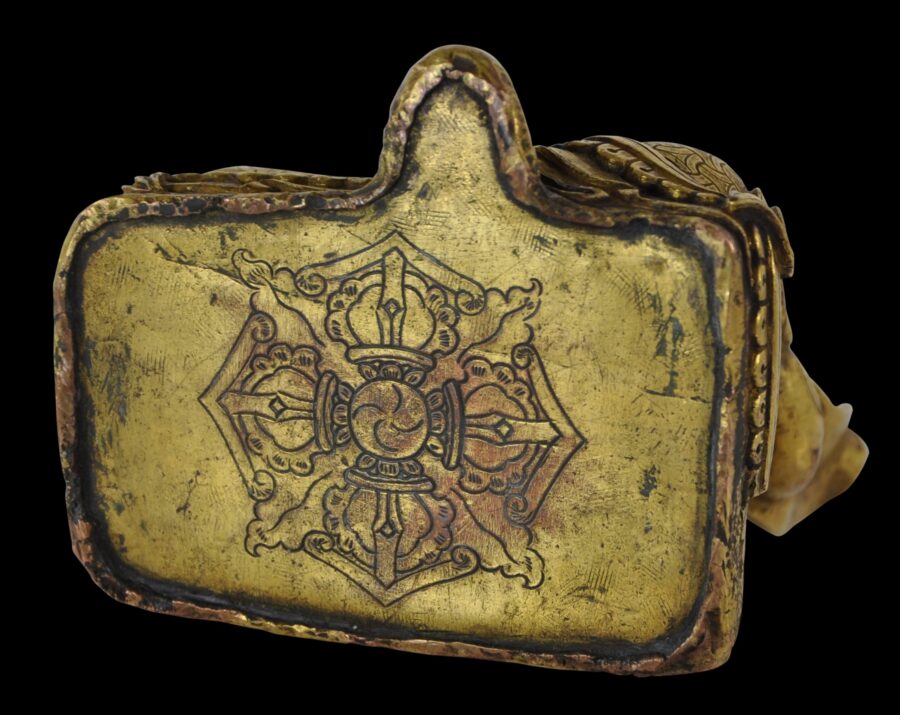This beautiful image of Vaishravana, the Tibetan god of wealth, is seated in vamardhaparyanka on a rectangular pedestal with his left foot resting on an outcrop. The image wears spectacular Mongolian dress or armour with flowing robes, and prominently raised shoulder padding. There is a cap with raised brim and a flaming jewel emblem, and the hair is piled above the hat on top of the head and surmounted by a floral emblem. The deity holds his attributes – the chatra in his right hand and a jewel-spitting nakula (mongoose) in his left hand.
The face has been heavily gilded, and a fine, curling moustache has been painted over the gilding, over the upper lip. The ear lobes are elongated and have round earrings. Remnants of blue pigment remain in the hair strands piled above the hat, and which cascade in two broad strands from either side of the back of the head and over the shoulders.
The robes that cover his corpulent body are splendidly decorated with tiered flower motifs over the breast, interlacing trellis motifs elsewhere, and a tasselled fringe on the lower edge.
The base plate is original and in intact, as is the consecration. The plate is engraved with a complex double vajra.
The image is as beautifully decorated on the back and sides as on the front.
The reverse of the plinth is engraved in Tibetan script with the deity’s name.
Vaishravana is an ancient Indian deity that in Tibetan Buddhism is said to inhabit the northern quadrant of the peak of Mount Meru, the mountain residence of the gods in the Tibetan Buddhist cosmos, and is the leader of the yakshas who live on the slopes of the mountain. As such he is known as the ‘king’ of the North, and often is depicted as a guardian figure on temple murals outside the main door. He is considered the god of wealth – but not necessarily in a materialistic way: Tibetan Buddhists consider the deity’s sentiment regarding wealth to be that of providing freedom by way of bestowing prosperity, so that individuals may then focus on the path or spirituality rather than on the materiality and temporality of wealth.
Vaishravana is often portrayed wearing traditional Mongolian dress. In the example here, the dress is particularly ornate. The use of Mongolian dress is accounted for by Mongolia having exerted significant political and cultural influence throughout Tibet’s history. The Mongol Yuan dynasty, through its Bureau of Buddhist and Tibetan Affairs (Xuanzheng Yuan) ruled Tibet through a high-level administrative department.
See a related image sold at Sotheby’s in 2007.
The image here is in very fine condition and is without losses or repairs. It is a splendid piece.
References
Meinert, C. (ed.), Buddha in the Yurt: Buddhist Art from Mongolia, Vols 1& 2, Hirmer, 2011.


